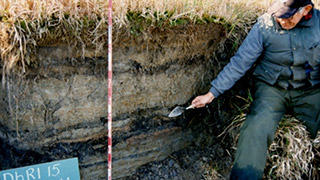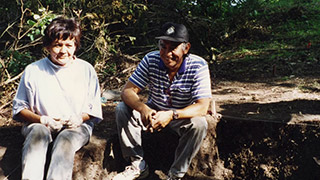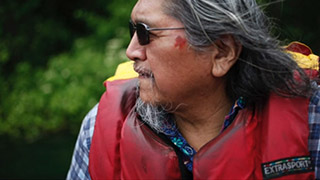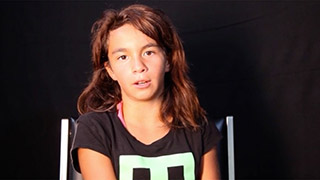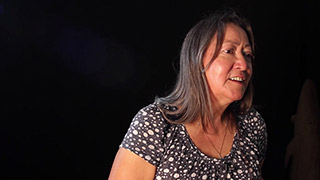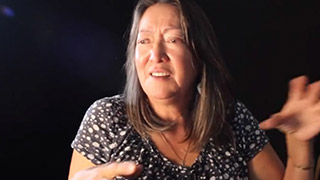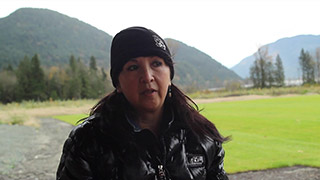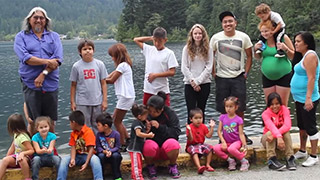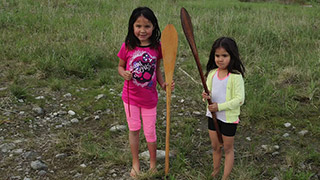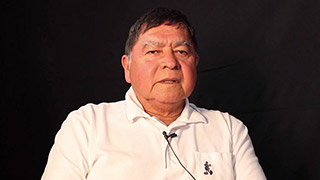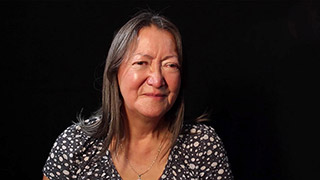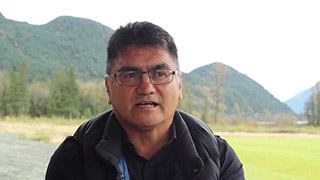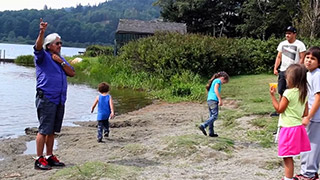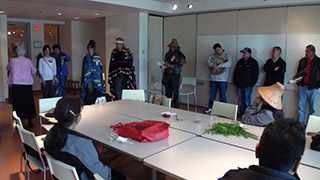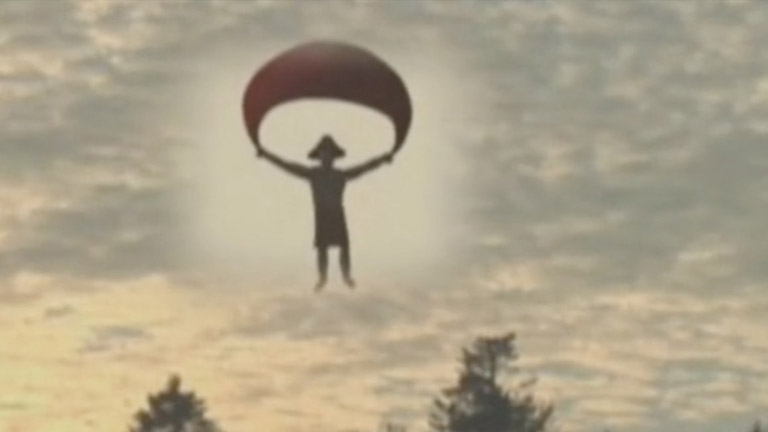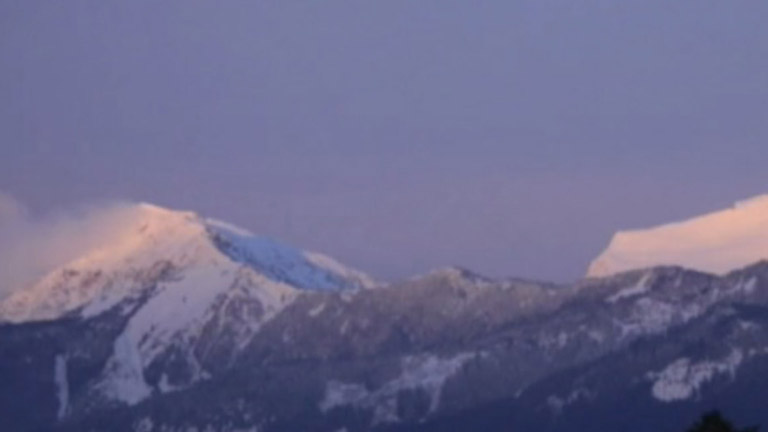Alicia Point's Sturgeon Design
Alicia Point's Sturgeon Design
View Transcript[Alicia Point]: I was born, as Betty would say, Beatrice Alicia Point. My father is Kuya from Chehalis. My mother is Mable Falarty from Kwantlen First Nation. I grew up partly in Chehalis and partly in Fort Langley. And now I’m married and live in Musqueam.
At the end of the 70’s, I lived here with my sister Jennifer Penier and her husband, Butch. They took us in after my mom died. They raised us for a while.
My brother started drawing and painting. I watched them at the kitchen table in Fort Langley and got interested because there was a female artist in the book. And I wanted to try it. So they told me to sit down, gave me a paper and a pen, and I drew one of her designs, Freda Diesing, and I liked it.
I liked painting especially. I like the Coast Salish designs, even though I started drawing West Coast people’s work. Someone told me I should do my own designs. And that kind of scared me, because I didn’t know who I was then. It was a challenge, and I took it upon myself and started putting Coast Salish designs in it.
It goes back to when I was about 9, growing up in Kwantlen, walking in the moonlight with my mom, and I asked her, “What kind of Indian are we? Kids at school are asking.” She pointed at the river, and she was holding my hand, and she pointed and said, “You see that river?”
And I said, “Yep.” And she said, ”You tell them, if anyone asks you who you are, you tell them you are Stó:lō.” And she said it in her Indian way, Halq̓eméylem. And I went, “Stó:lō?” I said, “ What is that?” She said, “It means river. You are a river Indian.” So she says, “You never forget that.” And I said, “Okay.”
So I went to school and told everybody who we were. We were Stó:lō. And I was proud. And I teach my grandchildren now. You are part Stó:lō, and you’re proud.
And the sturgeon design came from my sister Jennifer asking me. She was band manager here in Scowlitz, and she asked, “Have you ever drew a sturgeon design?” And I said, “No, no, I never.” And she said, “You should try it.” So that got put away until around 2000, and I come across a picture in a magazine of these men holding a big sturgeon out of the water in the Fraser River.
And I said “Oh, my god, that’s beautiful!” I cut it out, kept it in my studio. Kept doing my work, and I kept looking at that sturgeon going, “God, I should draw it. I should draw a design.” And my sister passed away, and I never forgot. And I said, “I’m going to draw a design.” I did it in a few hours in my studio. And I showed my husband after work. And he couldn’t believe it. He loved it. And I was happy. And I painted it on canvas, and it hung in my studio for a few years until Betty and Clifford mentioned to you guys to come and see.
I’m glad that it came to this, to Scowlitz. I didn’t want to do just one sturgeon, like, just one design. I saw the canvases that are long, and I thought I would do two sturgeons facing each other. That connects with Scowlitz.
Now my grandchildren go to high school and they go on their little phones so fast, and now they can view the site. I wish Jenny was here so I could share that with her and give her a hug.
Download:
SD (17MB) | HD (60 MB)



